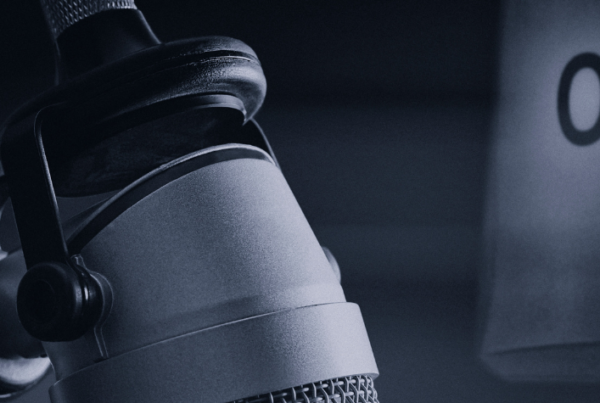Part 1: Understanding Climate Anxiety
Climate anxiety is shaping the life experience of young people in the United States and around the world. In this three-part article, we will unpack the concept of climate anxiety, particularly its impact on the younger generations in America. Part 1 will discuss what climate anxiety is and who it affects. In Part 2, we’ll look at different ways people are coping with climate anxiety and the actions they are taking. And Part 3 will provide supportive resources for climate anxiety and collective climate action.
What is Climate Anxiety?
Before jumping straight into the definitions, I should first disclose that I am not a psychologist, psychiatrist, or medical professional. Instead, my specialty is communication. And as part of this discipline, I study the human experience through the lens of science, observation, discussion, and data. That said, let’s take a look at some official definitions of climate anxiety and related concepts.
CLIMATE ANXIETY
“Distress relating to the climate and ecological crises.” (The Lancet)
ECOANXIETY
“Chronic fear of environmental doom.” (American Psychological Association)
ECOLOGICAL/CLIMATE GRIEF
“Grief felt in relation to experienced or anticipated ecological losses, including the loss of species, ecosystems and meaningful landscapes due to acute or chronic environmental change.” (Nature Climate Change)
SOLASTALGIA
“Distress or desolation caused by the gradual removal of solace from the present state of one’s home environment.” (Climate Change and Human Well-Being)
For this series, “climate anxiety” will encompass all climate change related distress.
Who Climate Anxiety Affects
More than two-thirds of Americans are anxious about climate change, according to a 2020 poll by the American Psychiatric Association. However, some communities are more vulnerable to climate anxiety than others.
YOUNG PEOPLE
Although every generation is affected, younger people consistently experience the highest levels of anxiety compared to other age groups. In a recent global survey of 10,000 young people (ages 16-25), more than 75% reported being frightened about the planet’s future, and almost half of all respondents said their climate anxiety negatively impacts their daily lives and functioning.
“Growing up knowing that climate change is a problem that would absolutely fall onto my generation made me constantly nervous about not only my future, but the future of literally everyone and everything else,” said Jael W.K. (18), a first-year college student in California. “We, as Gen Z, have kind of internalized this belief that we had to be great because the world depends on us.”
Alex J. (19) often finds himself troubled by the sheer magnitude of climate change and its consequences. “So many essential societal functions are going to be interrupted, getting worse and worse over time, and we just don’t have the resources to support that,” he said.
HISTORICALLY MARGINALIZED PEOPLE
Black, Indigenous, and other people of color, as well as women, low-income people, and gender-nonconforming people, are more likely to be affected by environmental distress and injustice than nonmarginalized (privileged) people. Intersectionality – belonging to more than one of these historically marginalized communities or identities– further compounds the experience of anxiety.
It is critical to understand that people can use different terms for expressing climate anxiety. And some may not single it out as a distinct concept apart from other long-standing existential threats and inequities impacting communities of color.
“We [Black and Indigenous people] are not only disproportionately affected by the climate crisis, but we carry a pain that comes from a long history of racial terror,” explains Nylah Burton, a Washington D.C.-based journalist who writes about the intersection of mental health, climate change, and race.
Is Climate Anxiety a Disorder?
Unlike other common anxieties such as agoraphobia (fear of open or public spaces) or claustrophobia (fear of enclosed spaces), climate anxiety is not classified a mental health disorder by the American Psychiatric Association. This is not to say that climate anxiety isn’t real, or to minimize the impact it can have on a person’s well-being. The reason it is not considered a pathology is because anxiety is seen as an appropriate, rational response to the enormous threat of climate change.
In the same way intense fear would be a normal, healthy reaction to being attacked, and grief is a natural response to losing a loved one, climate anxiety is considered a proportional response to the environmental dangers and social inequities we are living through today.
Words of Warning
Mental health experts warn that the chronic stress of ongoing climate anxiety can increase the risk of developing other disorders such as depression, anxiety, or substance abuse – especially for young people. Surviving an extreme weather-related event (such as a flood, hurricane, or fire) can also trigger mental health disorders, including post-traumatic stress disorder (PTSD).
Even though climate anxiety itself is not considered a disorder, it is important that you do not ignore your experience, especially if it starts to feel unmanageable. It’s best to get support before climate anxiety grows into something more general or debilitating.
If you ever feel like you need to talk to somebody urgently, 988 – the national suicide and crisis lifeline – offers free, confidential support (phone, text, and online chat) for people in distress. 988Lifeline.org
National Suicide & Crisis Lifeline: 988
Up Next: In Part 2, we’ll discuss how to cope with climate anxiety, and Part 3 will focus on collective action and resources.
Download the Full 3-Part Series:
From Climate Anxiety to Climate Action
or jump to:
- Part 1: Understanding Climate Anxiety
- Part 2: Coping with Climate Anxiety through Action
- Part 3: Taking Collective Climate Action
###
Patricia M. Moore, M.A.
Patricia Moore is a content and communication strategist with a passion for sustainability and social justice. When not researching and writing, you’ll find her spending time with family, walking her golden retrievers, or singing at the piano. LinkedIn.com/in/PatriciaMMoore





